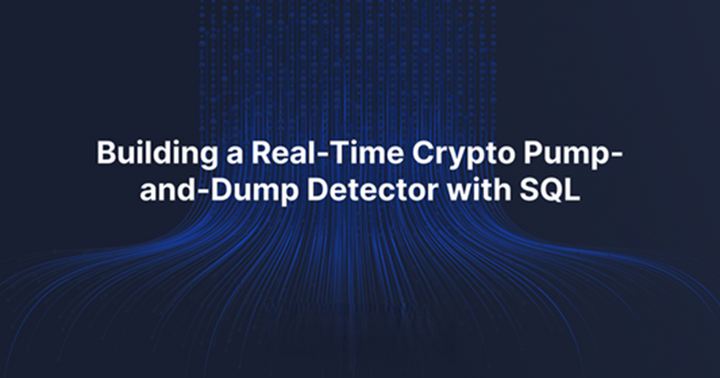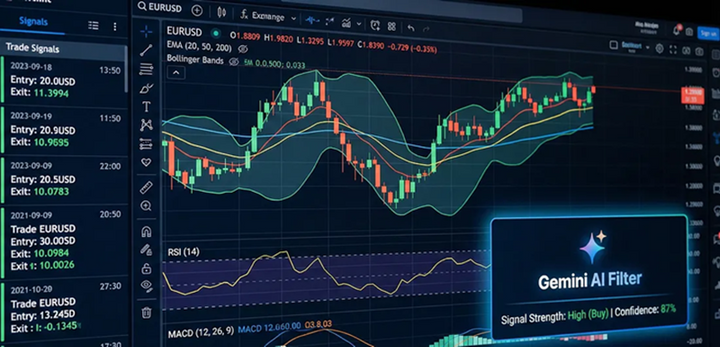交易预测AI模型开发教程
在众多 AI 模型和技术中,我们发现长短期记忆 (LSTM) 模型非常适合交易数据的预测。为了证明其有效性,我们开发了一个概念验证。

一键发币: x402兼容 | Aptos | X Layer | SUI | SOL | BNB | ETH | BASE | ARB | OP | Polygon | Avalanche
我们探索了预测股票价格走势的各种方法,包括使用 Facebook 的 Prophet 等预测工具、季节性自回归综合移动平均线 (SARIMA) 模型等统计方法、多项式回归等机器学习策略,以及最终基于 AI 的循环神经网络 (RNN)。
在众多 AI 模型和技术中,我们发现长短期记忆 (LSTM) 模型产生了最有利的结果。LSTM 模型是循环神经网络架构的一种变体,擅长处理序列预测挑战。
与传统的前馈神经网络相反,LSTM 拥有类似记忆的结构,使其能够在广泛的序列中保存上下文数据。此功能使其非常适合时间序列预测、自然语言处理和其他依赖序列数据的任务。它通过缓解梯度消失和梯度爆炸问题解决了标准 RNN 的根本缺陷,从而提高了模型识别数据集内长期依赖关系的能力。因此,LSTM 已成为复杂任务的首选,这些任务需要长时间深入理解数据。
为了证明其有效性,我们开发了一个概念验证。
1、开发环境准备
首先安装最新的 Python 和 PIP。
然后创建一个带有 main.py文件的 Python 项目,在项目中添加 data目录,设置并激活虚拟环境:
trading-ai-lstm $ python3 -m venv venv
trading-ai-lstm $ source venv/.bin/activate
(venv) trading-ai-lstm $接下来创建一个 requirements.txt文件,内容如下:
pandas
numpy
scikit-learn
scipy
matplotlib
tensorflow
eodhd
python-dotenv确保你已在虚拟环境中升级 PIP 并安装依赖项:
(venv) trading-ai-lstm $ pip install --upgrade pip
(venv) trading-ai-lstm $ python3 -m pip install -r requirements.txt我们已将你的 EODHD API API 密钥包含在 .env文件中:
API_TOKEN=<YOUR_API_KEY_GOES_HERE>一切就绪。
如果你正在使用 VSCode 并希望使用与我们相同的 .vscode/settings.json 文件,请参考如下内容:
{
"python.formatting.provider": "none",
"python.formatting.blackArgs": ["--line-length", "160"],
"python.linting.flake8Args": [
"--max-line-length=160",
"--ignore=E203,E266,E501,W503,F403,F401,C901"
],
"python.analysis.diagnosticSeverityOverrides": {
"reportUnusedImport": "information",
"reportMissingImports": "none"
},
"[python]": {
"editor.defaultFormatter": "ms-python.black-formatter"
}
}如果你需要的话,可以参考本项目的 GitHub 存储库。
2、构建代码
第一步是导入必要的库:
import os
os.environ["TF_CPP_MIN_LOG_LEVEL"] = "1"
import pickle
import pandas as pd
import numpy as np
from dotenv import load_dotenv
from sklearn.metrics import mean_squared_error, mean_absolute_error
from tensorflow.keras.models import Sequential
from tensorflow.keras.layers import LSTM, Dense, Dropout
from tensorflow.keras.models import load_model
from sklearn.preprocessing import MinMaxScaler
import matplotlib.pyplot as plt
from eodhd import APIClient默认情况下,TensorFlow 通常会生成大量警告和调试详细信息。我们更喜欢更干净、更有序的输出,因此我们抑制了这些通知。这是通过在导入 os模块后使用 os.environ 的特定行来实现的。
训练机器学习和人工智能模型的过程需要大量微调,主要通过所谓的超参数进行管理。这个主题很复杂,掌握它有点像一门艺术。最佳超参数的选择受各种因素的影响。
根据我们通过 EODHD API 获得的每日标准普尔 500 指数数据,我们从一些广为人知的设置开始。我们鼓励你修改这些设置以增强结果。目前,建议将序列长度保持在 20:
# Configurable hyperparameters
seq_length = 20
batch_size = 64
lstm_units = 50
epochs = 100下一步涉及从 .env 文件中提取你的 EODHD API 的 API_TOKEN:
# Load environment variables from the .env file
load_dotenv()
# Retrieve the API key
API_TOKEN = os.getenv("API_TOKEN")
if API_TOKEN is not None:
print(f"API key loaded: {API_TOKEN[:4]}********")
else:
raise LookupError("Failed to load API key.")确保你拥有有效的 EODHD API 的 API_TOKEN 以成功访问数据。
我们已经建立了几个可重复使用的函数,并将在下文进一步使用它们时详细介绍它们的功能。这些函数中包含注释以阐明它们的操作。
def get_ohlc_data(use_cache: bool = False) -> pd.DataFrame:
ohlcv_file = "data/ohlcv.csv"
if use_cache:
if os.path.exists(ohlcv_file):
return pd.read_csv(ohlcv_file, index_col=None)
else:
api = APIClient(API_TOKEN)
df = api.get_historical_data(
symbol="HSPX.LSE",
interval="d",
iso8601_start="2010-05-17",
iso8601_end="2023-10-04",
)
df.to_csv(ohlcv_file, index=False)
return df
else:
api = APIClient(API_TOKEN)
return api.get_historical_data(
symbol="HSPX.LSE",
interval="d",
iso8601_start="2010-05-17",
iso8601_end="2023-10-04",
)
def create_sequences(data, seq_length):
x, y = [], []
for i in range(len(data) - seq_length):
x.append(data[i : i + seq_length])
y.append(data[i + seq_length, 3]) # The prediction target "close" is the 4th column (index 3)
return np.array(x), np.array(y)
def get_features(df: pd.DataFrame = None, feature_columns: list = ["open", "high", "low", "close", "volume"]) -> list:
return df[feature_columns].values
def get_target(df: pd.DataFrame = None, target_column: str = "close") -> list:
return df[target_column].values
def get_scaler(use_cache: bool = True) -> MinMaxScaler:
scaler_file = "data/scaler.pkl"
if use_cache:
if os.path.exists(scaler_file):
# Load the scaler
with open(scaler_file, "rb") as f:
return pickle.load(f)
else:
scaler = MinMaxScaler(feature_range=(0, 1))
with open(scaler_file, "wb") as f:
pickle.dump(scaler, f)
return scaler
else:
return MinMaxScaler(feature_range=(0, 1))
def scale_features(scaler: MinMaxScaler = None, features: list = []):
return scaler.fit_transform(features)
def get_lstm_model(use_cache: bool = False) -> Sequential:
model_file = "data/lstm_model.h5"
if use_cache:
if os.path.exists(model_file):
# Load the model
return load_model(model_file)
else:
# Train the LSTM model and save it
model = Sequential()
model.add(LSTM(units=lstm_units, activation='tanh', input_shape=(seq_length, 5)))
model.add(Dropout(0.2))
model.add(Dense(units=1))
model.compile(optimizer="adam", loss="mean_squared_error")
model.fit(x_train, y_train, epochs=epochs, batch_size=batch_size, validation_data=(x_test, y_test))
# Save the entire model to a HDF5 file
model.save(model_file)
return model
else:
# Train the LSTM model
model = Sequential()
model.add(LSTM(units=lstm_units, activation='tanh', input_shape=(seq_length, 5)))
model.add(Dropout(0.2))
model.add(Dense(units=1))
model.compile(optimizer="adam", loss="mean_squared_error")
model.fit(x_train, y_train, epochs=epochs, batch_size=batch_size, validation_data=(x_test, y_test))
return model
def get_predicted_x_test_prices(x_test: np.ndarray = None):
predicted = model.predict(x_test)
# Create a zero-filled matrix to aid in inverse transformation
zero_filled_matrix = np.zeros((predicted.shape[0], 5))
# Replace the 'close' column of zero_filled_matrix with the predicted values
zero_filled_matrix[:, 3] = np.squeeze(predicted)
# Perform inverse transformation
return scaler.inverse_transform(zero_filled_matrix)[:, 3]
def plot_x_test_actual_vs_predicted(actual_close_prices: list = [], predicted_x_test_close_prices = []) -> None:
# Plotting the actual and predicted close prices
plt.figure(figsize=(14, 7))
plt.plot(actual_close_prices, label="Actual Close Prices", color="blue")
plt.plot(predicted_x_test_close_prices, label="Predicted Close Prices", color="red")
plt.title("Actual vs Predicted Close Prices")
plt.xlabel("Time")
plt.ylabel("Price")
plt.legend()
plt.show()
def predict_next_close(df: pd.DataFrame = None, scaler: MinMaxScaler = None) -> float:
# Take the last X days of data and scale it
last_x_days = df.iloc[-seq_length:][["open", "high", "low", "close", "volume"]].values
last_x_days_scaled = scaler.transform(last_x_days)
# Reshape this data to be a single sequence and make the prediction
last_x_days_scaled = np.reshape(last_x_days_scaled, (1, seq_length, 5))
# Predict the future close price
future_close_price = model.predict(last_x_days_scaled)
# Create a zero-filled matrix for the inverse transformation
zero_filled_matrix = np.zeros((1, 5))
# Put the predicted value in the 'close' column (index 3)
zero_filled_matrix[0, 3] = np.squeeze(future_close_price)
# Perform the inverse transformation to get the future price on the original scale
return scaler.inverse_transform(zero_filled_matrix)[0, 3]
def evaluate_model(x_test: list = []) -> None:
# Evaluate the model
y_pred = model.predict(x_test)
mse = mean_squared_error(y_test, y_pred)
mae = mean_absolute_error(y_test, y_pred)
rmse = np.sqrt(mse)
print(f"Mean Squared Error: {mse}")
print(f"Mean Absolute Error: {mae}")
print(f"Root Mean Squared Error: {rmse}")我们想强调的一个方面是在各种函数中包含 use_cache变量。此策略旨在减少对 EODHD API 的不必要 API 调用,并避免使用相同的每日数据对模型进行冗余重新训练。
激活 use_cache变量允许将数据保存到 data/目录中的文件中。如果数据不存在,则会生成数据;如果已经存在,则会加载数据。当脚本多次执行时,这种方法可以显著提高效率。要在每次运行时获取新数据,只需在调用函数时停用 use_cache选项或清除 data/目录中的文件,即可实现相同的结果。
现在我们进入代码的核心……
if __name__ == "__main__":
# Retrieve 3369 days of S&P 500 data
df = get_ohlc_data(use_cache=True)
print(df)首先,我们从 EODHD API 获取 OHLCV 数据并将其存入名为 df 的 Pandas DataFrame。OHLCV 表示开盘价、最高价、最低价、收盘价和成交量,这些是交易蜡烛数据的标准属性。如前所述,启用缓存以简化流程。我们还可以选择在屏幕上显示这些数据。

我们将一次性介绍以下代码块...
features = get_features(df)
target = get_target(df)
scaler = get_scaler(use_cache=True)
scaled_features = scale_features(scaler, features)
x, y = create_sequences(scaled_features, seq_length)
train_size = int(0.8 * len(x)) # Create a train/test split of 80/20%
x_train, x_test = x[:train_size], x[train_size:]
y_train, y_test = y[:train_size], y[train_size:]
# Re-shape input to fit lstm layer
x_train = np.reshape(x_train, (x_train.shape[0], seq_length, 5)) # 5 features
x_test = np.reshape(x_test, (x_test.shape[0], seq_length, 5)) # 5 featuresfeatures 包含我们将用来预测目标(即 close)的输入列表。
target 包含目标值列表,例如 close。
scaler 表示用于规范化数字的方法,使它们具有可比性。例如,我们的数据集可能以收盘价 784 开始,以 3538 结束。最后一行中较高的数字并不一定意味着对预测目的具有更大的意义。规范化确保了可比性。
scaled_features 是此缩放过程的结果,我们将使用它来训练我们的 AI 模型。
x_train 和 x_test 分别表示我们将用于训练和测试 AI 模型的数据集,80/20 的分割是一种常见的做法。这意味着我们 80% 的交易数据用于训练,20% 用于测试模型。 x 表示这些是特征或输入。
y_train 和 y_test 功能类似,但仅包含目标值,例如 close。
最后,必须重塑数据以满足 LSTM 层的要求。
我们开发了一个函数来重新训练模型或加载以前训练过的模型。
model = get_lstm_model(use_cache=True)
所显示的图像可让你一窥训练序列。你会发现,最初, loss和 val_loss指标可能并不紧密一致。但是,随着训练的进行,这些数字有望收敛,表明取得了进展。
loss:这是在训练数据集上计算的均方误差 (MSE)。它反映了每个训练时期预测标签和真实标签之间的“成本”或“误差”。目标是通过连续的时期减少这个数字。val_loss:这个均方误差是在验证数据集上确定的,用于衡量模型在训练期间未遇到的数据上的表现。它是模型推广到新的、未见过的数据的能力的指标。
如果你想查看测试集上的预测收盘价列表,可以使用如下的代码:
predicted_x_test_close_prices = get_predicted_x_test_prices(x_test)
print("Predicted close prices:", predicted_x_test_close_prices)这些数据本身可能不是特别有启发性或直观。然而,通过绘制实际收盘价与预测收盘价的关系图(请记住,这占整个数据集的 20%),我们可以得到更清晰的图像,如下所示:
# Plot the actual and predicted close prices for the test data
plot_x_test_actual_vs_predicted(df["close"].tail(len(predicted_x_test_close_prices)).values, predicted_x_test_close_prices)
结果表明,该模型在测试阶段预测收盘价方面表现优异。
现在,让我们来看看最有可能预料到的方面:我们能否确定明天的预测收盘价?
# Predict the next close price
predicted_next_close = predict_next_close(df, scaler)
print("Predicted next close price:", predicted_next_close)
Predicted next close price: 3536.906685638428这是一个用于教育目的的基本示例,仅标志着开始。从这里开始,你可以考虑合并其他训练数据、调整超参数或将模型应用于各种市场和时间间隔。
如果你想评估模型,可以将其包括在内:
# Evaluate the model
evaluate_model(x_test)在我们的场景中是……
Mean Squared Error: 0.00021641664334765608
Mean Absolute Error: 0.01157513692221611
Root Mean Squared Error: 0.014711106122506767mean_squared_error 和 mean_absolute_error 函数源自 scikit-learn 的指标模块,分别用于计算均方误差 (MSE) 和平均绝对误差 (MAE)。均方根误差 (RMSE) 是通过对 MSE 取平方根得出的。
这些指标提供了对模型准确性的数值评估,而图形表示有助于直观地将预测值与实际数字进行比较。
原文链接:Trading predictions using AI and Python
DefiPlot翻译整理,转载请标明出处
免责声明:本站资源仅用于学习目的,也不应被视为投资建议,读者在采取任何行动之前应自行研究并对自己的决定承担全部责任。


